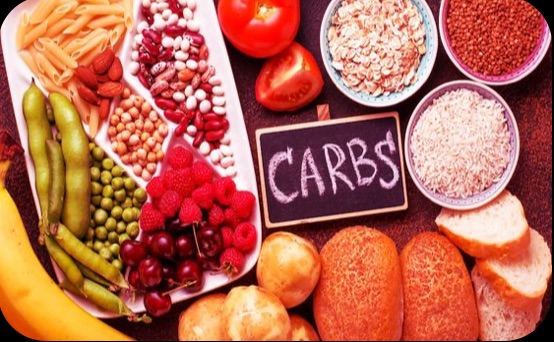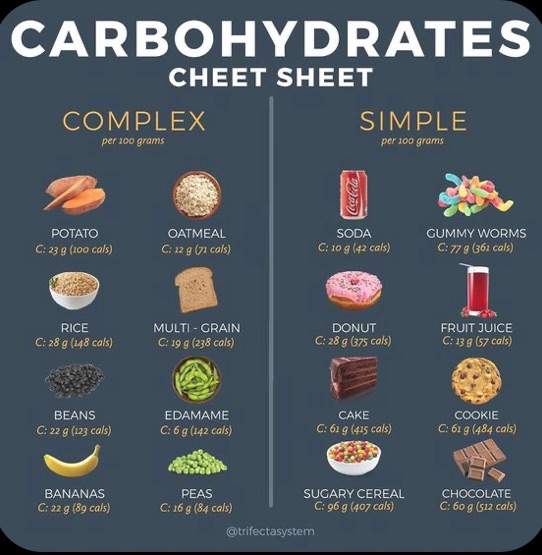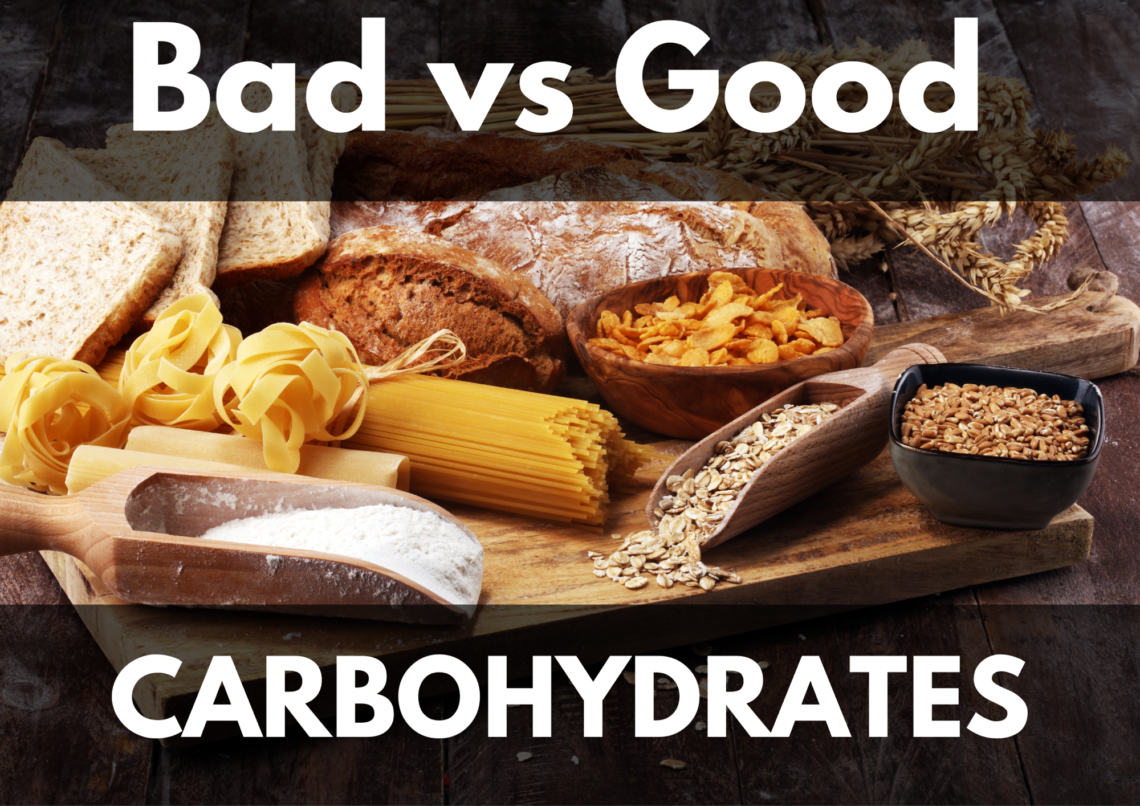Carbs have a bad reputation. So much so that people will try to eliminate carbs out of their diet all together! But before you go on a No Carb Ever diet, let’s learn a little more about them.
All Carbs Are Not Bad 💥
Carbohydrates, also known as carbs, play a critical role in our daily bodily functions. Carbs consist of sugars, starches, and fiber. This nutrient category is the body’s main fuel source and should be consumed for proper bodily functions. The word carbohydrate comes from the chemical makeup of the nutrient food group. The chemical makeup includes carbon, water and oxygen, hence “carbo” meaning carbon and “hydrate” meaning water (hydrogen and oxygen).
Carbs are made of two groups. Complex Carbohydrates and Simple Carbohydrates. To help you remember, think of Complex Carbs as the carbs that are harder to eat for most (not sweet). These are the carbs that comprise of healthy nutrients and fiber. Think veggies, beans, and whole grains. Simple carbohydrates are the carbs that are easy to eat for most (sweet). These carbs are made up of sugars and processed ingredients.
Common Misconception-Natural sweeteners are more nutritious than artificial sugars.
The body doesn’t care. Sugar is sugar. You may benefit from consuming fruit as oppose to a Snickers bar because there are other nutrients and antioxidants in the fruit. This is why some diabetics are encouraged to eat fruits with less sugar in it.
Fiber and Starches 🌾
Starches are plant-based carbs that are also known as Complex Carbohydrates. Examples would be beans, peas, pasta, potatoes, rice and other grain products.
Fiber is another Complex Carbohydrate. Fiber comes in various types and is responsible for helping with bowel regularity. In most cases you can find fiber in whole grains, fruits, vegetables, beans, nuts, and lentils. A diet rich in fiber can also help lower the risk of obesity, heart disease, and other chronic diseases.
Both fiber and starches provide a sense of feeling satiated with much less caloric intake when compared to simple carbohydrates or sugar.
Sugars 🍫
Sugars are broken down into many forms. “Mono-” meaning one, “di-” meaning two, “oligo-” meaning few, and “poly-“many and “saccharide-” means sugar. Some sugars are natural. Natural sugars would be the sugars found in fruits, vegetables, and honey. These are not processed or added. They occur naturally. These natural occurring sugars are called fructose.
Fructose is considered a monosaccharide or one unit sugar. Glucose is another monosaccharide and is the sugar that is used for energy in the body’s cells. It is considered blood sugar and sometime blood glucose, because it circulates through the blood. Galactose is another monosaccharide that is structurally the same as glucose but doesn’t taste as sweet.
When two monosaccharide units of link together, it is referred to as disaccharides. Examples would be:
- glucose + glucose = maltose (broken down from starches)
- glucose + fructose = sucrose (table sugar but also naturally in some fruits, veggies, and grains)
- glucose + galactose = lactose (found in milk)
And not to get too complex with info, oligosaccharides contain 3-10 units of sugar.

So in a nutshell, the body needs carbs. Carbs are the body’s main source for energy. Carbs fuel the body to do everything from jogging, workouts with Pure and Simple Fitness (shameless plug), digestion and optimal thinking. This is not typically a food group you want to avoid. It is however, important to consume the carbs that contain less added sugars, as well as consist of both fiber and starches. This will keep you full with less caloric intake and bowel regularity!
Keep it simple!
If you are looking to get a jump start to your summer body, grab The Pure and Simple Detox Plan/E-Book Here!! Only $5 for the month of March in honor of National Nutrition Month🎉🎉



